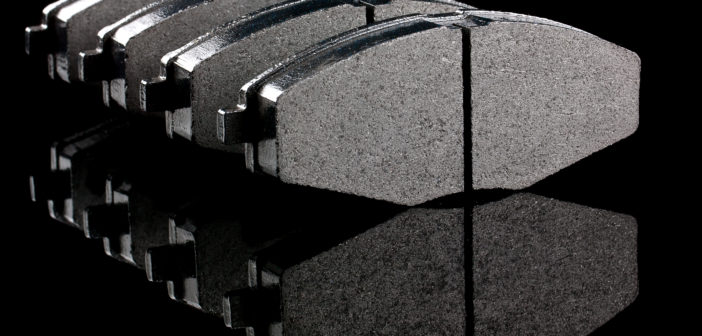What are brake pads and what do they do?
We use a cars brakes to slow it down, everyone knows that. But how exactly does it happen? This article aims to help you to make an informed decision the next time you need to buy brake pads.
Most modern cars will usually come installed with disc brakes on the front wheels, if not all four. Disc brakes are superior to the more traditional drum brakes in almost every way, though you will still find drum brakes on the rear tyres of some models. Your disc brakes essentially comprise of three parts; the brake discs attached to the wheels, the brake calipers which sit astride the discs and the brake pads, which attach on the inside of the calipers. The brake pads are the parts which are squeezed against the brake discs, causing friction (and theoretically dissipating the heat created) thereby slowing down and eventually stopping your car.
The various types of brake pads and their uses
There is no one, universal type of brake pad which fits into every car. The type of brake pads you need are dependent on numerous factors, such as your driving style, the type of driving being done (think driving in cities vs motorway driving) as well as the power of your car.
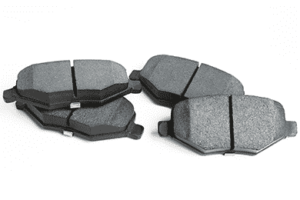 Semi-metallic – these brake pads are an amalgamation of various metals including steel, brass and copper. They are usually comprised of around 65% metals, with the other 35% being a mix of carbon and other inorganic matter. At the expense of faster deterioration of the brake discs (due to the high metal content) these brake discs are able to dissipate heat more efficiently.
Semi-metallic – these brake pads are an amalgamation of various metals including steel, brass and copper. They are usually comprised of around 65% metals, with the other 35% being a mix of carbon and other inorganic matter. At the expense of faster deterioration of the brake discs (due to the high metal content) these brake discs are able to dissipate heat more efficiently.
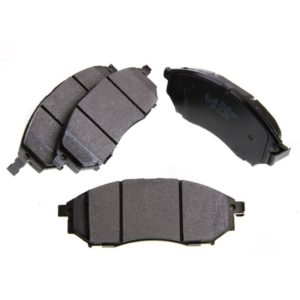 Low metal – twice as expensive as their semi-metallic brethren, they only contain 30% of metal – meaning less wear to the brake discs. The other 70% is comprised of organic
Low metal – twice as expensive as their semi-metallic brethren, they only contain 30% of metal – meaning less wear to the brake discs. The other 70% is comprised of organic 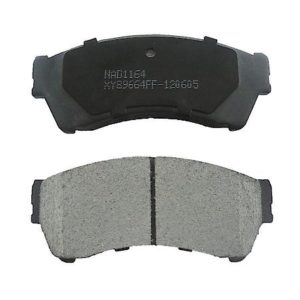 matter, such as carbon, glass and kevlar.
matter, such as carbon, glass and kevlar.
Organic – these brake pads are soft and quiet, though wear more rapidly in comparison to other brake pads. They comprise of around 85% organic matter, making them much more sustainable than other pads. Due to their low durability however, they’re not suitable for sporty or aggressive drivers – these types of pads are better suited to steady, long distance driving e.g. motorways. Newer cars will generally come installed with these types of brings, due to their lower manufacturing costs.
Ceramic – b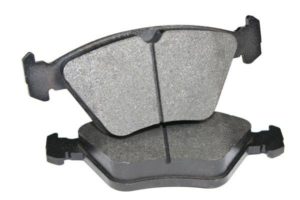 y far the priciest pads, ceramic brake pads represent the newest innovations in braking technology. Though they generally fetch the highest prices, ceramic has the highest durability when compared to other types of pads. They also handle higher temperatures with ease when compared with other types. Additionally, the dust released when in use doesn’t discolour nor stick to the wheels.
y far the priciest pads, ceramic brake pads represent the newest innovations in braking technology. Though they generally fetch the highest prices, ceramic has the highest durability when compared to other types of pads. They also handle higher temperatures with ease when compared with other types. Additionally, the dust released when in use doesn’t discolour nor stick to the wheels.
So how do I choose which type is right for me?
If you’re driving a powerful car, or if people describe you as something of an ‘aggressive’ type of driver, then metallic brake pads are your best option. They provide effective stopping power, as well as good heat deflection, at the expense of a higher rate of wear to the brakes as a whole. If, however, you’re a more timid sort of driver or you’re driving around in a sensible economic car, then consider organic or ceramic brake pads. Though you’ll go through more of them, they’re more cost-effective and environmentally friendly.
I’ve made a choice – what now?
So you’ve read the article this far, and decided on the right types of brake pads for you. When it comes to purchasing your pads, don’t forget that nowadays its more common to buy spare car parts online. The prices are generally a lot more competitive than what garages or shops can offer, and you will have a wider range to choose from.
Once installed, there are some points to remember which will help lengthen your new brake pads lifespan. It goes without saying that aggressive and extensive breaking is going to cause considerable wear and tear. Eventually, due to excessive amounts of friction, the brakes are going to overheat – causing the brake fluid to literally boil. The surface of your brake pads can also ‘glaze’, resulting in loss of friction entirely. Other factors such as braking whilst towing a heavy trailer, towing for extended periods or driving on a track will also rapidly deteriorate your pads.
How will I know when my brake pads need changing?
Reputable giants of the braking world such as Brembo advise that you should be checking them every 15,000/20,000 kilometres. Additionally, all brake pads bought from such manufacturers will come with a Minimum Thickness (known as ‘Min TH’) guideline. Once the brake pads have been worn down to this minimum thickness, it is advised you change pads as soon as possible. Should you forget to check, be aware of these symptoms of failing brake pads:
- reoccurring noises during braking
- visible signs of overheating (the smell of burning, or smoke)
- deep circular lines or cracks visible on the brake discs
- vibrations during braking
Which brands are the best?
There are a lot of manufacturers producing high quality brake components, it is best to shop around different vendors as prices can vary. It is generally considered good practice though to purchase brake pads which match the make of your brake discs. Usually this coupling of brands will result in a better fit, as well as more effective friction and thermal conductivity. Also, most reputable mechanics will recommend you change brake components in pairs, its a little more costly but changing them one by one can result in a loss of handling and safety.

